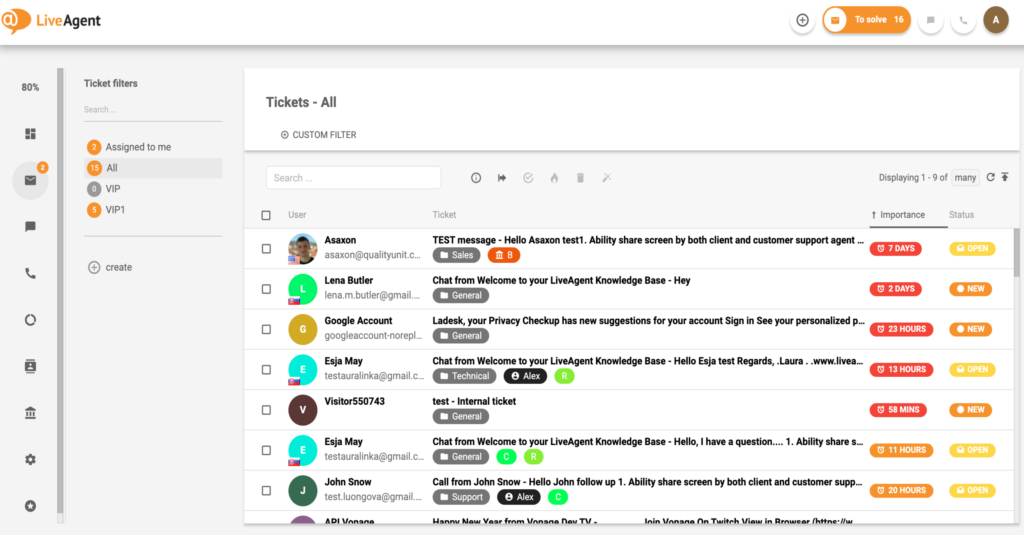The role of customer service in customer experience
The difference between customer service and customer experience
Although customer service is often mistakenly considered synonymous with customer experience, they are not the same. While both refer to the process of customer interaction, there is a fundamental difference between the two:
- Customer service represents the efforts a company makes in order to assist customers when they experience issues related to its products or services.
- Customer experience or CX consists of all interactions and engagement between a business and a customer, at every touchpoint across the entire customer journey, and viewed entirely from the customer’s perspective, learn what is customer experience journey.
The rising importance of customer service
Consumer expectations of customer service are growing year over year. According to the Microsoft 2018 State of Global Customer Service survey, 59% of consumers have higher expectations than they did just a year ago. 61% have even switched brands due to poor customer service. And an overwhelming 95% of the survey respondents cited customer service as important in their choice of and loyalty to a brand.
Not only do consumers expect brands to deliver excellent service, but they are also ready to pay for it. The 2018 Genesys State of Customer Experience research revealed that one in three consumers is willing to pay more to receive a higher level of service.
6 customer service tips to improve customer experience
Since customer service is an integral part of customer experience (CX), improving it basically means enhancing the experience for your customers. This is the key to increase satisfaction, retention, and revenue. Here are 6 essential ways to improve customer experience by providing better customer service:
1. Scale your support options to meet customers’ needs
Offering traditional support channels is no longer enough. Microsoft’s Global State of Multichannel Customer Service Report found that more than 90% of all consumers expect brands to offer a self-service support portal or FAQ section. Over a third of consumers prefer social media to phone and email support, according to the Sprout Social survey. While the Software Advice study showed that 63% of millennials prefer to have their basic customer support questions answered via live chat over traditional channels. Since channel preferences may greatly vary, knowing how your customers prefer to interact with your business is essential.

2. Never ignore customer support requests
Ignoring customer service requests inevitably results in a negative customer service experience. It may even lead to customer churn in the long run. The Customer Service Benchmark Report 2018 by SuperOffice revealed that 62% of companies didn’t respond to a customer service request. And 90% did not acknowledge an email has been received. Another study found that over 70% of brands ignore customer complaints on Twitter. Gartner reported that companies that ignore support requests on SoMe witness a 15% higher churn rate than those who don’t. Ignoring customer requests is one of the staples of bad customer service.
3. Improve your first contact resolution
When customers reach out for support, they are already frustrated and want immediate resolution without needing to contact a company over and over again regarding the same issue. Providing first contact resolution reduces customer effort, increases customer satisfaction, and improves service experience. In fact, Microsoft’s survey respondents ranked having to repeat themselves as one of the two most frustrating aspects of poor service experience. On the other hand, having inquiries resolved during a single interaction was ranked as the most important aspect of a good service experience.
4. Provide omnichannel service experience
Consumers very often jump from channel to channel – including during a single inquiry. They want a smooth and effortless transition between channels and interactions. Microsoft’s survey reported that 66% of global consumers actively use 3 or more channels. And more than 75% expect customer service representatives to have visibility into previous interactions and purchases. Lack of integration results in disjointed communication and customer frustration. Brands need to deliver a consistent, seamless, and unified service experience across every touchpoint. This applies to the various channels or devices customers choose to use.
5. Shift from reactive to proactive customer support
A study conducted by Harris Interactive, on behalf of inContact found that 87% of U.S. consumers want to be contacted proactively by an organization or company. Moreover, 73% of those who have had a pleasant surprise or positive experience with an incoming call from a business/service provider report they had a positive change in their perception of the organization calling them. BT research also showed that 78% of consumers like it when organizations notice they have been having difficulty. For instance; with a website or completing an order and contact them directly to offer assistance. Proactively reaching out to customers and offering help before they even ask for it almost always guarantees a positive customer service experience.
6. Invest in your customer service team
According to the PwC’s customer experience survey, nearly 80% of American consumers say that along with speed and convenience, knowledgeable help and friendly customer service are the most important elements of positive CX. Equipping your service agents with the right tools and resources, and providing the ongoing training ensures their competence and ability to deliver better service quality and great customer experience. Investing in service employee engagement is also of paramount importance. The Tempkin Group’s Employee Engagement Benchmark Study reported that companies that outperform their competitors in customer experience have more engaged workers.
Customer service isn’t only about making it easy for customers to resolve specific issues they have with your products. It makes a significant impact on the customer experience. Because the quality of service customers receive from brands fundamentally affects their perceptions of those brands. Therefore, consistently delivering excellent service ultimately results in a better customer experience, long-term loyalty, and sustainable business growth.